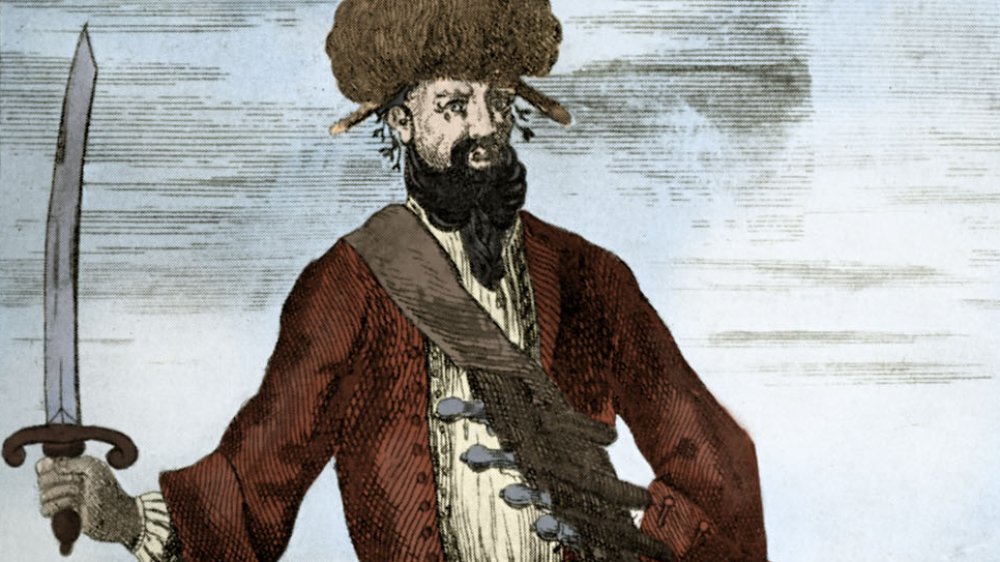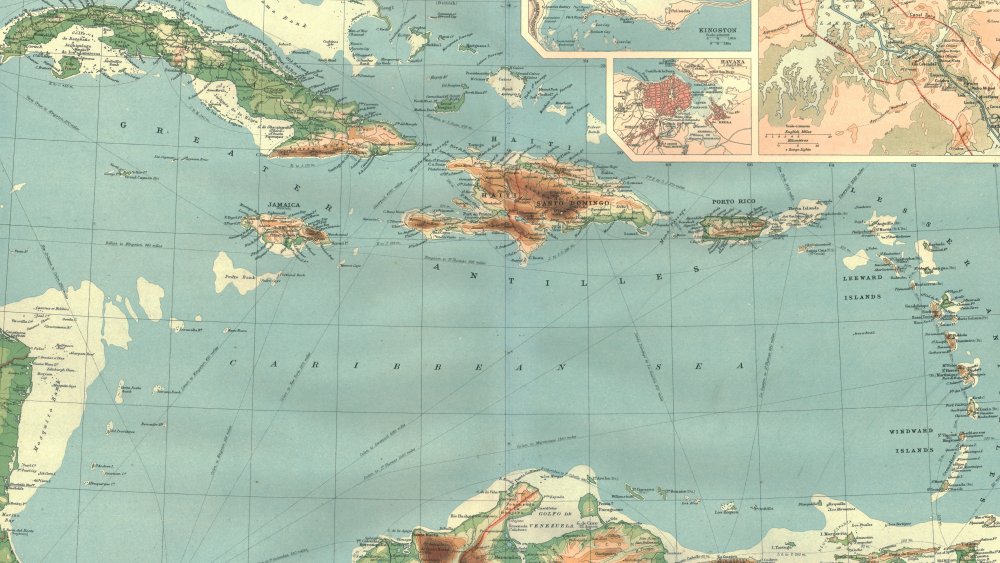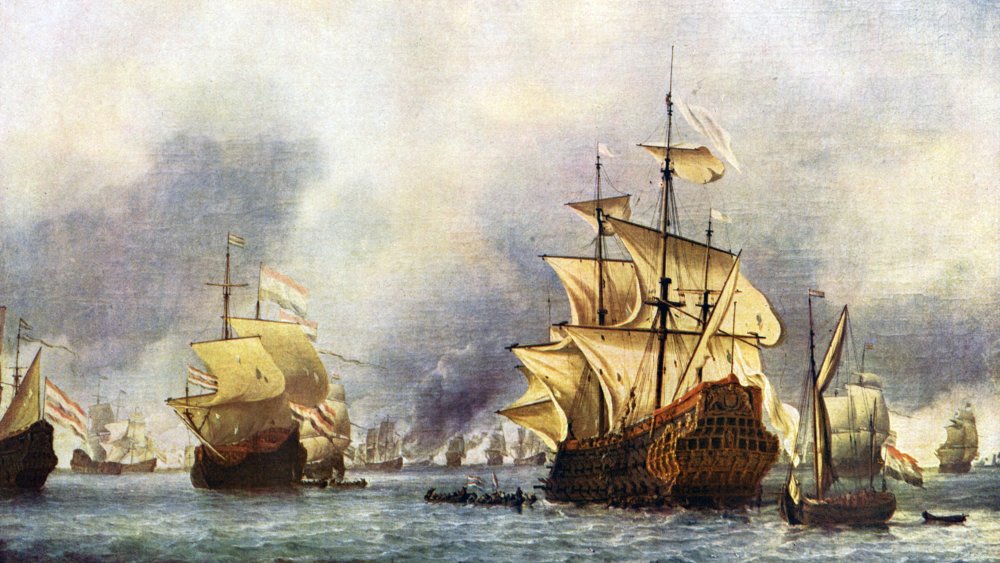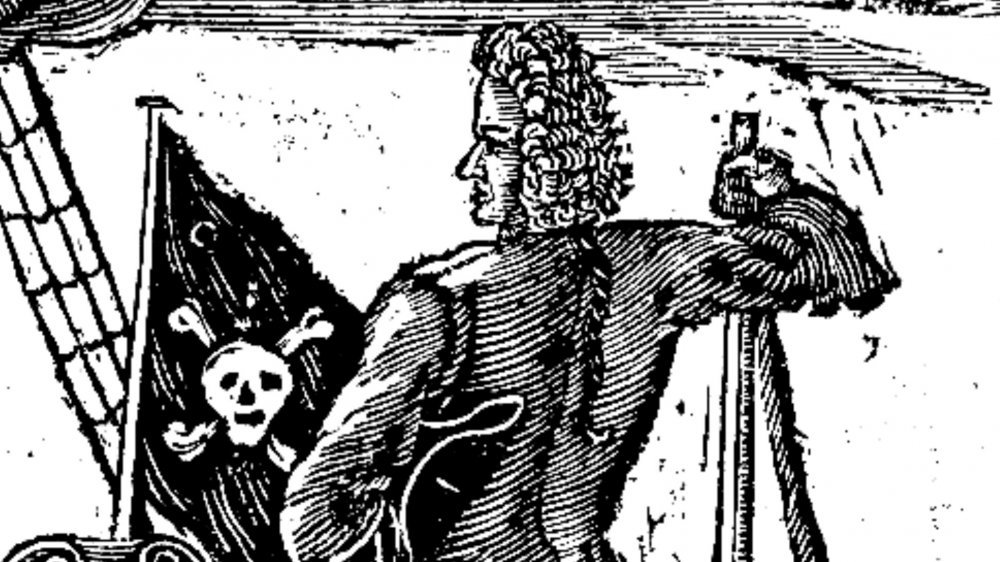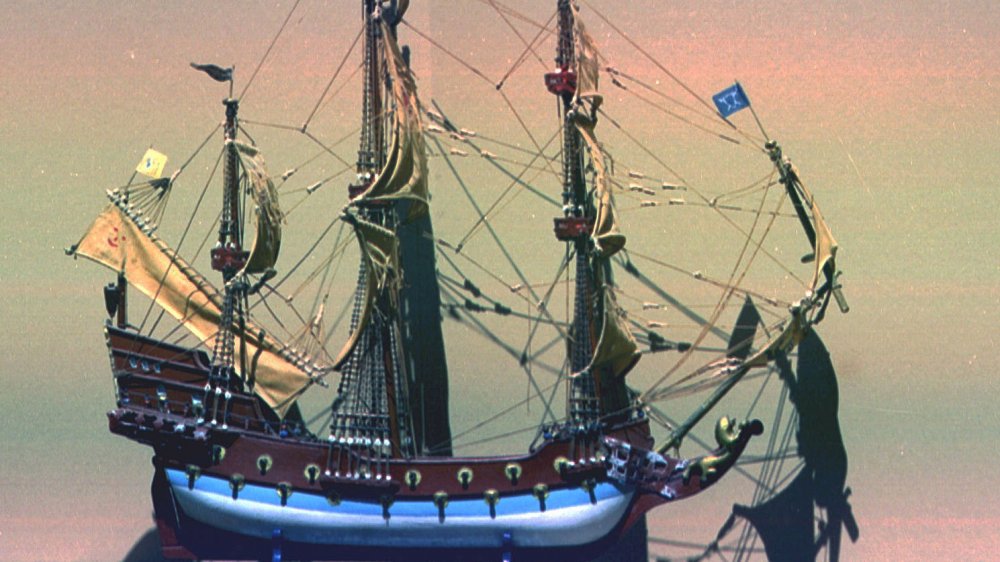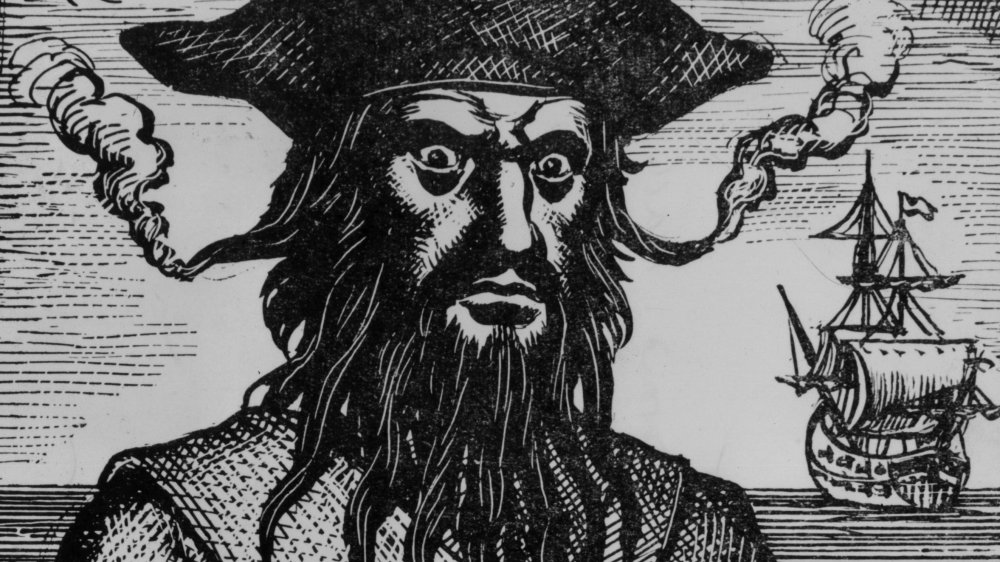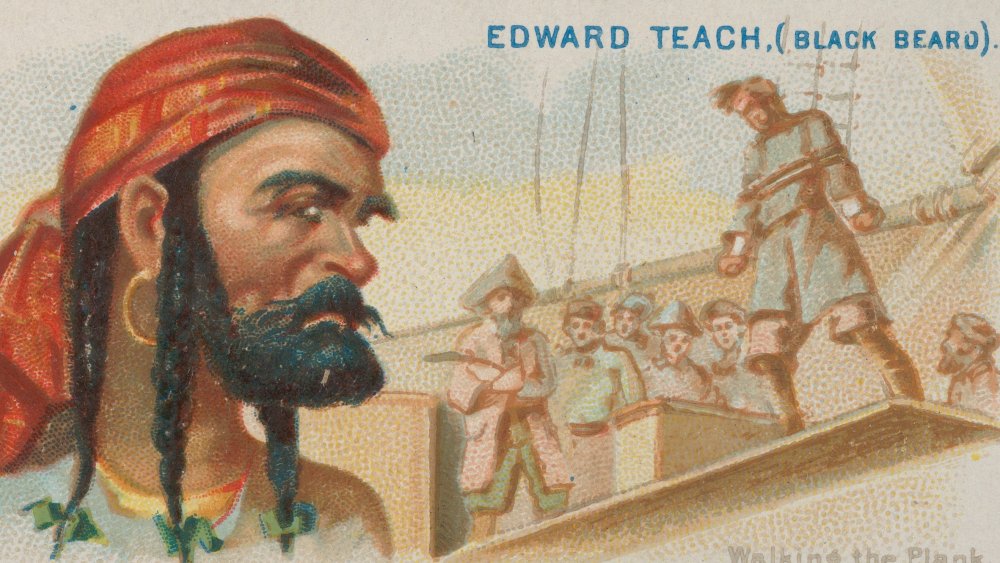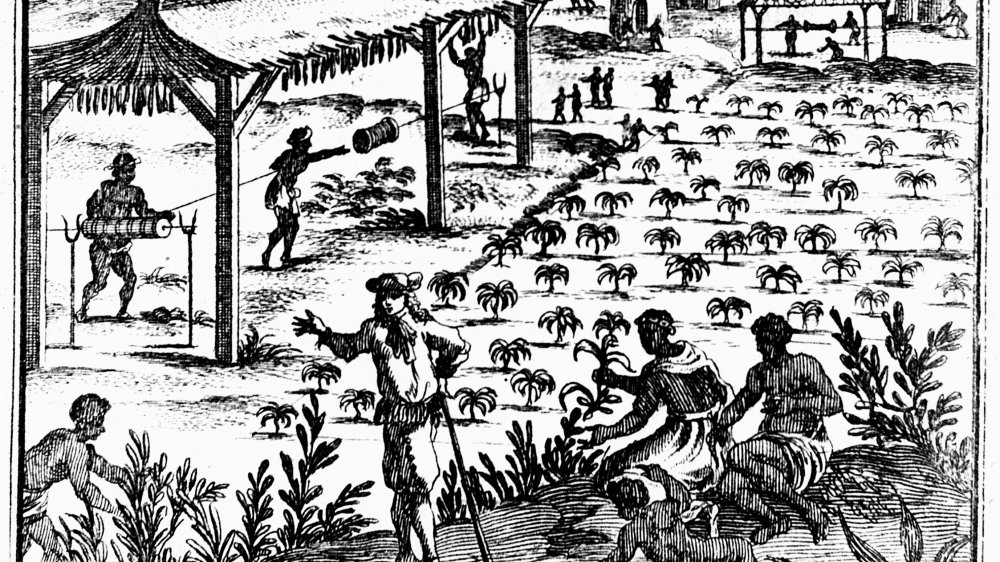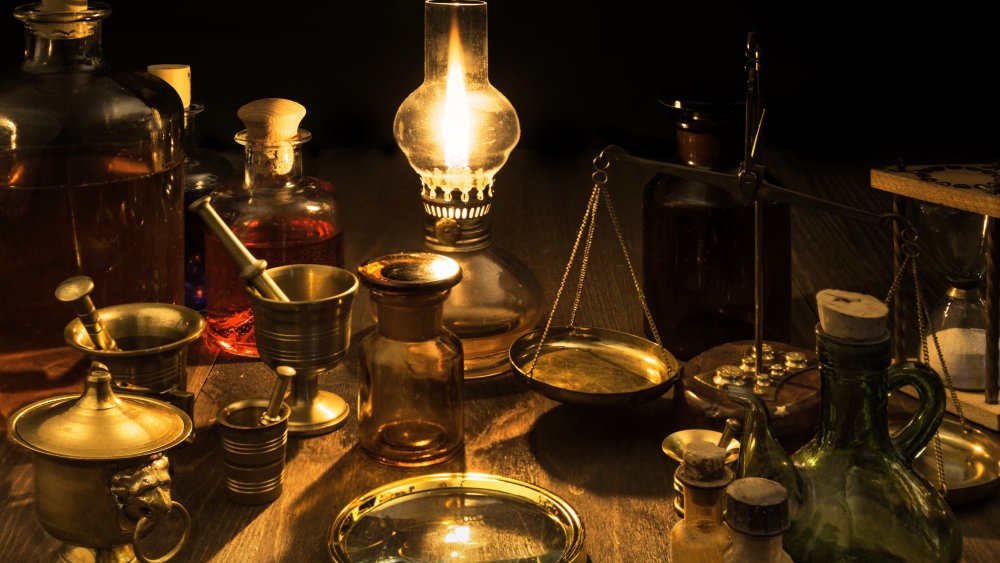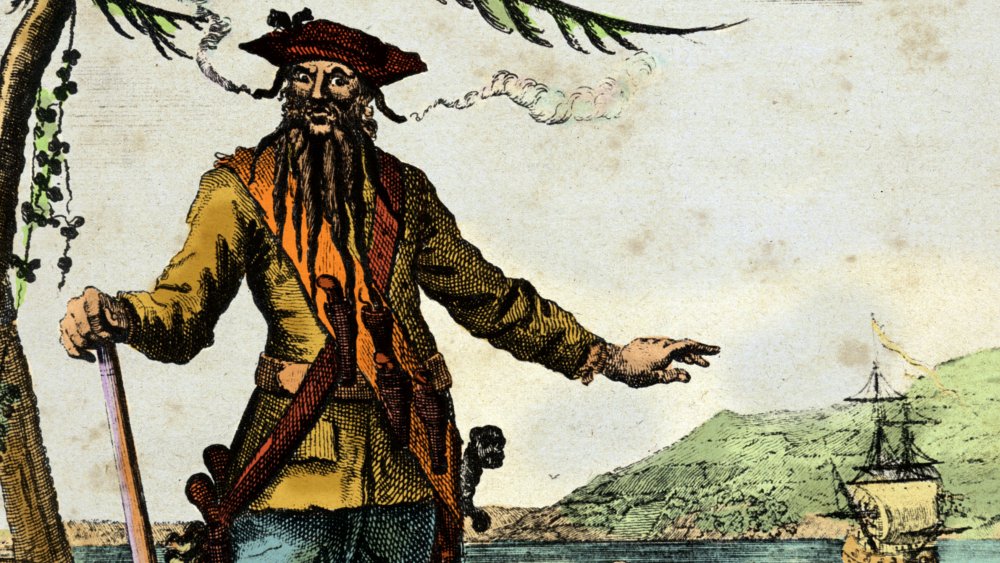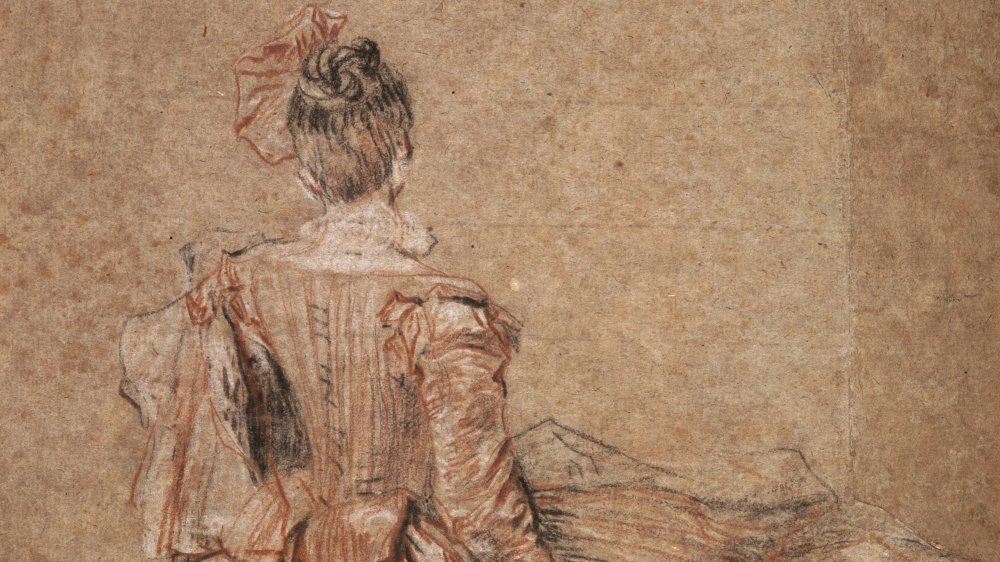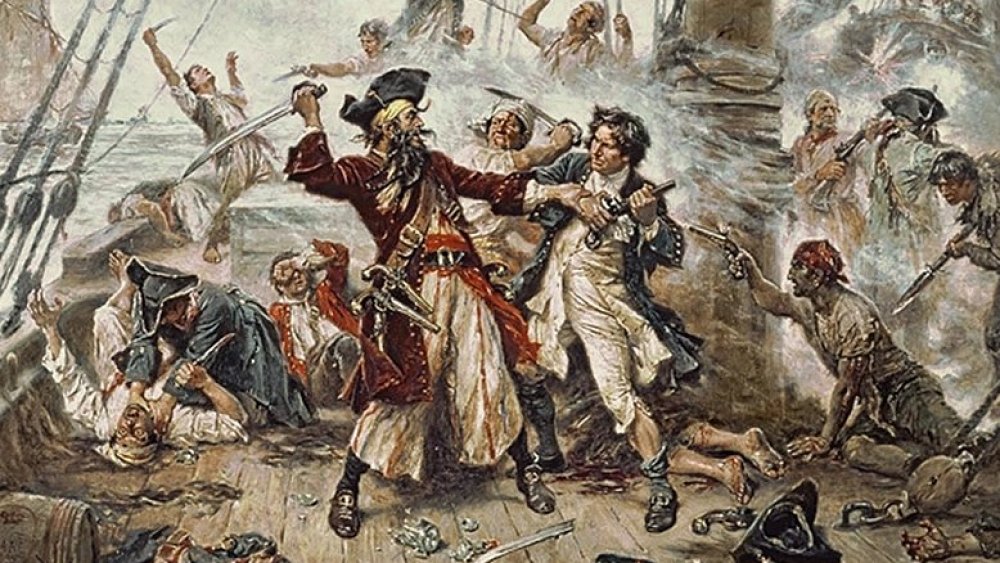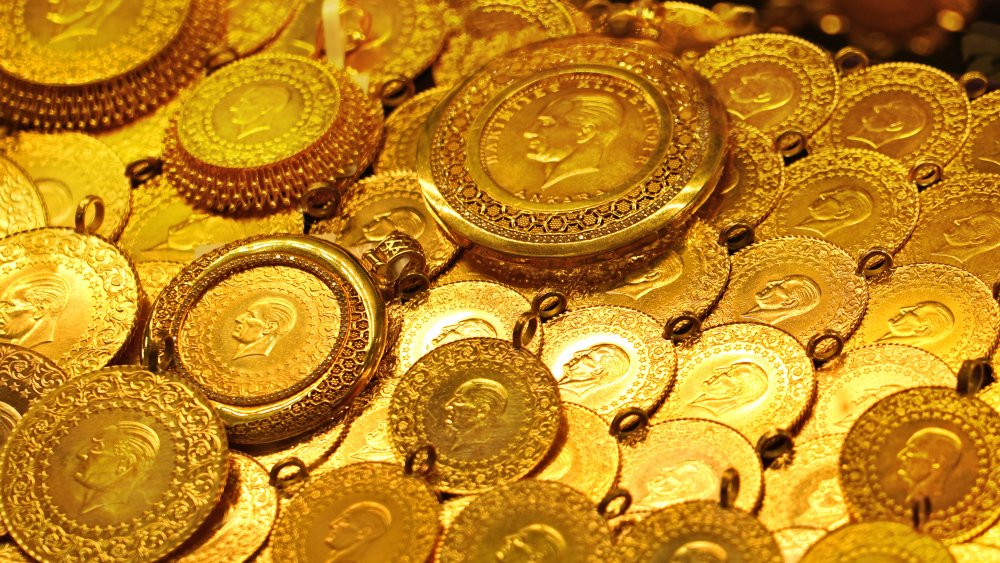The Untold Truth Of The Pirate Blackbeard
Captain Blackbeard is probably the most infamous pirate of history's Golden Age of Piracy — a period that spanned the mid-1600s to the early 1700s. What is most unusual about his notoriety is that Blackbeard didn't actually have a long career in piracy. Records show that he was only in the pirating business from roughly 1713 to 1718, a mere five years. And most of his life is still shrouded in mystery.
So, what is it about Blackbeard that so intrigues people? Is it the stories of his supposed cruelty? Is it the salacious tale of his 14 wives? Or does the fascination lie in his rumored stores of hidden treasure? Whatever the reason, pirate buffs have long been captivated by the history of Blackbeard. Thanks to the discovery of his wrecked ship, historians and archaeologists have been able to learn more about the life of the enigmatic pirate. As it turns out, the Blackbeard legend — and Hollywood's many takes on the pirate — are quite different from reality. This is the untold truth of the pirate Blackbeard.
Blackbeard's early life remains a mystery
The truth is, we don't actually know much about Blackbeard's early life. Much of what historians do know is strictly guesswork. According to The History Press, Blackbeard was born in Bristol, England sometime around 1680. Researchers believe Blackbeard's real name was Edward Teach, Jr. (sometimes written as Edward Thache or Thatche).
Blackbeard was one of two children born to Edward Teach, Sr. and his first wife, Elizabeth. After his first wife's death, Teach, Sr. remarried and had three more children. Around 1695, Teach, Sr. moved his entire family to Jamaica. Records show that the Teach family owned a large plantation in Spanish Town that, in 1706, Edward Teach, Jr. inherited as the eldest son.
Around the time he joined the Royal Navy, Teach Jr. generously turned over the plantation to his stepmother and half-siblings rather than hold on to it. Teach joined the Royal Navy somewhere between 1706 and 1713 and became a sailor aboard the HMS Windsor. This would be Teach, Jr.'s first step to becoming the notorious and widely feared Blackbeard the pirate.
Blackbeard started as privateer
Blackbeard started out his nautical life as a privateer during Queen Anne's War. Being a privateer meant that he was technically a pirate; he was just pirating legally. According to Britannica, Queen Anne's War was the second in a series of wars between Britain and France in North America from 1702 to 1713. Both countries were seeking control over the continent. By the end of the war, Britain had acquired Newfoundland and the Hudson Bay region from the French. They also overtook the once-French-owned of Port Royale and added the French-ruled Arcadia to the British province of Nova Scotia.
As privateers, Blackbeard and his compatriots would attack and loot enemy ships, basically committing acts of piracy that were authorized by the British government, as told by ANCHOR. However, once the war was over, there wasn't any immediate need for government-sanctioned privateers. Rather than lose his livelihood and miss out on an adventurous life at sea, Edward Teach (along with many others) decided to turn to unregulated piracy.
Blackbeard had a pirate mentor
Blackbeard had to learn piracy from somewhere. And he found his pirate mentor in the form of the famous former privateer-turned-pirate, Benjamin Hornigold. Hornigold converted to unadulterated piracy after serving as a privateer during the War of Spanish Succession and became the notable pirate captain of the time with an able crew, per The Way of the Pirates. Edward Teach joined Hornigold sometime around 1717. Blackbeard was a capable pirate and so impressed Hornigold that he was promoted to second-in-command. About a year after joining the crew, Hornigold rewarded Blackbeard with his own ship, a small crew, and the title of "Captain." As captain, Blackbeard became friendly with another famous pirate — Stede Bonnet — and the two traveled together for a time.
Oddly enough, Hornigold ultimately gave up the pirate-life and became a pirate hunter. When ex-privateer Woodes Rogers became the first governor of the Bahamas, he started severely cracking down on piracy. Rogers offered a King's pardon to any pirate willing to give up their pirating careers. Those who didn't end their piracy willingly were usually hunted down and hung. But many pirates — Hornigold among them — took Rogers up on his offer of amnesty and gave up their former lives. Hornigold, in particular, formed an allegiance with Governor Rogers and started hunting down pirates on Rogers' behalf, capturing and killing many. Hornigold remained a pirate hunter until he died in a shipwreck during a trading voyage to Mexico.
Blackbeard had an impressive ship
Blackbeard's famous ship, The Queen Anne's Revenge, was originally a French slave ship called La Concorde. He and his crew captured the ship in the Caribbean off the island of Martinique in the late fall of 1717. Those aboard La Concorde didn't stand much of a chance. According to The Queen Anne's Revenge Project, La Concorde's crew had already suffered 16 deaths, and another 36 members were sick with scurvy and dysentery. Finding themselves at a severe disadvantage, Captain Dosett surrendered the ship to Blackbeard. At least three of La Concorde's crew members joined Blackbeard voluntarily, though Blackbeard and his men forcibly took a few others whom they thought would be useful to them; a pilot, three surgeons, two carpenters, two sailors, and the cook.
Blackbeard dropped off the rest of the crew members and African slaves on the island of Bequia. He evidently found La Concorde so impressive a vessel that he decided to keep it for himself. He renamed it The Queen Anne's Revenge after the last reigning Stuart monarch. The ship was big enough to hold around 300 men and 40 cannons, allegedly. In exchange, Blackbeard gave the French an older, smaller ship. The French unhappily gave their new vessel the fitting name of Mauvaise Rencontre or Bad Encounter.
Blackbeard was a fierce-looking guy
What has made Blackbeard so well remembered was probably his appearance. History remembers Blackbeard as a frightening figure who struck terror into the hearts of all sailors. Mariners prayed that they would never encounter him at sea. Records state that Blackbeard was very tall and sported his enormous trademark black beard — long enough to reach his waist. According to the North Carolina Department of Natural and Cultural Resources, before each battle, Blackbeard was reported to have braided his long beard into several small plaits and tied bright ribbons around them. After twisting a few braids behind his ears, he would then light several slow-burning hemp cords and place them under his hat, letting the smoke gather around his face. With the added pistols and daggers hanging off his belt and chest, this gave him a terrifying, demonic appearance. In fact, accounts from eyewitnesses literally stated that when in battle, Blackbeard literally "looked like the devil," according to research from Amherst College.
To inspire even more fear in his enemies, he flew his notorious pirate flag depicting a skeleton stabbing a heart with a spear while toasting the devil with the other hand. Blackbeard made sure any ship who spotted his flag would know just who was on the horizon — and who they would soon have to face.
Blackbeard wasn't that ruthless
Although he had a fearsome reputation, Blackbeard was surprisingly less brutal than people realize. According to Smithsonian Magazine, despite his horrifying battle appearance and rumors of ruthless and savage murders, there is actually no record that indicates that Blackbeard oppressed his crew so cruelly. In fact, there doesn't even appear to be any evidence that demonstrates that Blackbeard killed anyone before his final battle at Ocracoke.
There is actually evidence suggesting that Blackbeard may have tried to avoid killing when possible, reports History Answers. He would definitely threaten a grisly death to anyone who opposed him, but if his enemies surrendered peacefully, he would often let them leave alive. We also know that Blackbeard was raised in a wealthy family where he would have received a substantial education. Historians have found that the real Blackbeard was likely not the maniacal rogue he sometimes pretended to be. According to East Carolina University archaeologist Charles Ewen, Blackbeard's creepy get-up may have been just for the sake of appearances.
"He likely cultivated that murderous image," Ewen told Smithsonian Magazine. "Scaring people was a better option than to damage what you are trying to steal."
Blackbeard targeted slave ships
Make no mistake, Blackbeard was far from being an abolitionist. His father's plantation operated on slave labor, so he was certainly accustomed to the practice. However, according to The History Press, slave ships were among Blackbeard's favorite targets, so he regularly encountered African slaves being transported. After pillaging a ship, there have been reports showing that Blackbeard would return captured slaves to the mainland where they would presumably be sold at auction, while other times the enslaved individuals willingly joined his crew.
As noted by The Daily Press, historians have found through detailed documentation from former crew members that Blackbeard had a highly diverse company. When Blackbeard sailed to Bath, North Carolina in 1718, records show that sixty African men were crew members — this would indicate that one in six of his men were Black.
Oddly enough, five months later, at Blackbeard's final battle at Ocracoke, records indicate that he was down to six Black men in the crew. What happened to the other 54 remains a mystery. Historians tend to disagree on the exact status of Black pirates and whether they were contemporaries (Black pirates were rarely referred to as slaves in reports) or whether they were regarded as commodities (despite being technically being freed slaves).
Blackbeard had an arsenal of medical supplies
Recent discoveries have shown that joining Blackbeard's crew certainly came with at least one perk — guaranteed on-site medical care. After discovering the wrecked Queen Anne's Revenge in the 1990s, archaeologists have found that Blackbeard didn't just keep valuables and weapons on his ship. As described by the Washington Post, Blackbeard also had a wide array of medical supplies that were found during the ship's excavation. Medical tools discovered included silver needles, scissors, a brass mortar and pestle, a urethral syringe (used to inject mercury into the urethra), clyster pump (to administer enemas), bloodletting tools, and brass screws (for tourniquets during surgeries and amputations).
Other supplies indicated the men weren't merely treated for surface injuries like bullet wounds or burns. It would seem crew members frequently required treatment for ailments such as scurvy, syphilis, and dysentery. The fact that so much medicinal equipment was found on the ship would indicate that Blackbeard was highly invested in having a healthy crew, as noted by archaeologist Linda Carnes-McNaughton.
"Because of his passion for piracy, I think he cared very much about keeping it going, and to keep it going, he had to have a healthy, functioning crew," Carnes-McNaughton told the Washington Post.
This assumption would certainly be supported by an old story about Blackbeard's visit to Charleston, South Carolina. According to an article by UNC-Chapel Hill archivist Nicholas Graham, apparently, Blackbeard captured several prominent citizens for ransom. What he demanded was not money but medical supplies.
Blackbeard once tried to reform
Surprisingly enough, at one point, Blackbeard almost took a cue from his old mentor, Benjamin Hornigold, and considered giving up his pirate ways. After the Queen Anne's Revenge was wrecked around Beaufort Inlet, Blackbeard took what was left of his weapons and a few crew members and headed to Bath, North Carolina. Upon his arrival, Blackbeard applied for a pardon from Governor Charles Eden under the Act of Grace, according to the Queen Anne's Revenge Project. To fight against piracy, King George I implemented the Act in 1718, which allowed pirates to surrender to an appointed authority. In return, they would be granted a full pardon. And Bath was one of the last places in the colonies that provided support to former pirates.
Governor Eden had the proper appointment to grant Blackbeard's pardon and decided that fulfilling this request would be beneficial to everyone. Eden reasoned that if he issued the pardon, it meant Bath wouldn't have to worry about an attack from Blackbeard and his men. Not only that, but Blackbeard was quite prosperous after all his years of looting and pillaging. Wealth like his would definitely help the local economy. To prove he was in earnest, Blackbeard purchased a home and decided to take a wife. Everything seemed to be in order, and Blackbeard seemed truly reformed. However, Blackbeard soon grew bored of the domesticated civilian life and went back to his old pirate life.
Blackbeard was married
Legend has it that Blackbeard had 14 wives in his lifetime. He very well may have had mistresses or relationships where he considered those women common-law wives, but there's no legal documentation of any of those unions, except for one. Records show that Blackbeard was legally married to the teenage Mary Ormond (accounts vary as to whether she was 14 or 16 at the time of their marriage) of Bath, North Carolina, per The Way of the Pirates. We don't know much about Mary Ormond except that she was the daughter of plantation owner William Ormond and married the seemingly reformed Edward Teach at a young age. When Blackbeard was trying to emphasize his seriousness in giving up piracy, he thought it would drive the point home if he tied the knot. And the daughter of a wealthy local plantation owner seemed like a great choice.
However, the marriage did not last long, and Blackbeard soon returned to his old pirating ways. We don't know what happened to Mary Ormond after her husband absconded, though the rumors prevail. Some say that she became pregnant quickly after her marriage, but no record confirms that she ever had a child with Blackbeard. Others say that Blackbeard presented his young wife as a gift to his men, but there's no evidence that this occurred either. To this day, all we know for sure is that Mary Ormond was the only legitimate wife of the infamous Blackbeard.
Blackbeard had a gruesome death
After his failed attempt at reform, Blackbeard's pirating days eventually came to an end for good. Unfortunately for him, that meant a very grisly death. According to Time magazine, British Naval Lieutenant Robert Maynard had been tasked by Virginia Governor Alexander Spotswood to hunt down Blackbeard and his crew. In November of 1718, Maynard received a tip that Blackbeard's ship was spotted right off North Carolina's Ocracoke Island. Maynard took two ships and prepared to launch an attack, deadset on taking Blackbeard down (dead or alive) once and for all.
Once Blackbeard and his men realized they were under attack, they started firing on Maynard and his ships. When Maynard came close enough, he and Blackbeard were able to exchange words. Blackbeard, still reluctant to excessively violent means, told Maynard that if he left him be, then he and his men would not bother them. But his offer was no dice for Maynard, who was determined to either capture and kill Blackbeard this time, even if it meant his own death. Blackbeard and his men ultimately found themselves overwhelmed. When he was killed, Blackbeard's body was shown to have been shot five times and slashed around 20. His head was severed from his body and Maynard hung it from his ship to prove to everyone that the dreaded pirate Blackbeard was dead. The remainder of Blackbeard's corpse was unceremoniously thrown into the ocean.
Blackbeard never left behind a buried treasure
For generations, it was rumored that Blackbeard had left behind a vast buried treasure, but none have found it. It doesn't seem that this incredible wealth actually existed. Although the most famous pirate of the age, Blackbeard wasn't actually the most prosperous. That's not to say he didn't do well for himself as a pirate — because he certainly was quite wealthy — but historically, other lesser-known pirates accumulated much greater fortunes. For example, the pirate Henry Avery was able to pillage one ship worth hundreds of thousands of pounds versus the many, lesser valued ships Blackbeard captured. Avery did so well for himself that he was able to retire from piracy and lived under the false identity of a wealthy man for the rest of his life.
According to Smithsonian Magazine, it can probably be said that Blackbeard's real treasure came in the form of his infamous ship, the Queen Anne's Revenge. The discovery of Blackbeard's wrecked ship has provided archaeologists and historians with a hoard of artifacts and clues that can tell us about the strange life of the notorious pirate. It may not be gold, but Blackbeard's beloved ship is a veritable treasure trove of information and details for pirate-history buffs of today about the mysterious, yet infamous Captain Blackbeard.
